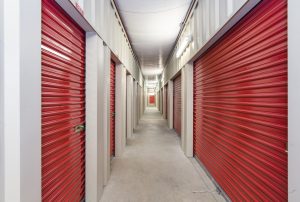- Design with energy efficiency in mind to reduce carbon footprint and save on energy bills.
- Choose sustainable materials like bamboo, recycled glass, concrete, and FSC-certified hardwood.
- Use water efficiently by installing low-flow fixtures and a rainwater harvesting system.
- Employ passive solar design for heating and cooling your home naturally.
- Prioritize indoor air quality by using low-VOC paints and finishes and installing a mechanical ventilation system with heat recovery.
Building an eco-friendly home can be daunting, but it is worth it. An eco-friendly home is not only kinder to the environment, but it can also be beneficial for your health and well-being and save you money in the long run.
1. Design with Energy Efficiency in Mind
Designing with energy efficiency in mind will help reduce your home’s carbon footprint while also saving you money on energy bills. You can achieve this by orienting your home to maximize natural light and ventilation, using insulation to regulate indoor temperatures, and installing energy-efficient appliances. Consider installing solar panels or a wind turbine as a renewable energy source to power your home.
2. Choose Sustainable Materials
Choosing sustainable materials is crucial when building an eco-friendly home. Look for materials that are environmentally friendly, energy-efficient, and renewable. Use recycled materials like bamboo flooring or countertops made from recycled glass. Consider using wood from Forest Stewardship Council (FSC) certified forests.
Here are some sustainable materials to consider:
Bamboo
Bamboo is an excellent choice when considering sustainable materials for your eco-friendly home. It is renewable and durable and grows faster than hardwood trees, making it a much more efficient option. Additionally, bamboo flooring is incredibly affordable compared to other types of flooring, such as laminate or hardwood. Bamboo may be the perfect fit for you if you’re looking for a reliable yet stylish option that won’t put too big a dent in your wallet.
Recycled Glass

Using recycled glass is an ideal way to contribute to conservation while making your home look attractive and modern at the same time. Besides being aesthetically pleasing, recycled glass countertops are incredibly durable and easy to keep clean. Plus, their colors and hues can easily be customized according to your preference. As an added bonus, recycled glass countertops are cheaper than their natural stone counterparts.
Concrete
Concrete is ideal for eco-friendly homes due to its durability and energy efficiency. For instance, high-quality concrete fencing can help keep energy bills low, as it has excellent insulation properties. In addition, this type of fencing requires very little maintenance and can stand the test of time. Not only that, but concrete fencing also has a modern look that can enhance any home’s curb appeal.
Hardwood
Hardwood is a timeless and classic choice when it comes to building materials. However, not all hardwoods are created equal – look for wood from FSC-certified forests to ensure you get true sustainable lumber. Hardwood can be used in various ways around the home, including flooring or cabinetry. Not only will your eco-friendly home look beautiful, but you’ll also do your part to contribute to conservation efforts.
3. Use Water Efficiently
Water is a precious resource, and it’s essential to use it wisely in your eco-friendly home. Consider installing low-flow showerheads, toilets, and faucets to conserve water. Install a rainwater harvesting system to collect rainwater for outdoor use, reducing your reliance on municipal water sources. Consider artificial turf or drought-tolerant landscaping to reduce water usage and maintenance costs.
4. Employ Passive Solar Design

Passive solar design is a cost-effective way to improve energy efficiency in your home and reduce your carbon footprint. It involves using the sun’s energy to naturally heat and cool your home. Consider orienting your home to capture the sun’s warmth in the winter and block out its heat in the summer. Use windows and skylights to maximize natural light and ventilation.
5. Prioritize Indoor Air Quality
Indoor air quality is essential for your health and well-being, and it’s vital to prioritize it when building an eco-friendly home. Use low-VOC (volatile organic compounds) paints and finishes to reduce indoor air pollution. Install a mechanical ventilation system with heat recovery to improve indoor air quality while reducing energy consumption. Opt for hardwood flooring instead of carpeting, which can trap allergens and pollutants.
In Summary
Building an eco-friendly home is essential for the environment, your health and well-being, and your wallet. By designing with energy efficiency in mind, choosing sustainable materials, using water efficiently, employing passive solar design, and prioritizing indoor air quality, you can create an eco-friendly home that is comfortable, healthy, and cost-effective. Small changes can significantly impact you, so start building your eco-friendly home today.






